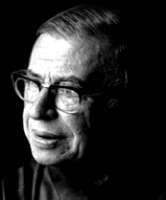
Mohon ma'af lahir dan Bathin.
Taqobalallahu minna waminkum syiamana wa syiamakum.
Minal Aidin Wal Faidzin.
May this Eid fill your heart and home with Peace and Joy!
Eid Mubarak from our home to yours . . .
وَذَا النُّونِ إِذ ذَّهَبَ مُغَاضِبًا فَظَنَّ أَن لَّن نَّقْدِرَ عَلَيْهِ فَنَادَى فِي الظُّلُمَاتِ أَن لَّا إِلَهَ إِلَّا أَنتَ سُبْحَانَكَ إِنِّي كُنتُ مِنَ الظَّالِمِينَ {87}


 So, what shall we say? Many Javanese would quote their old saying, "aja kagetan, aja gumunan, aja gugupan". Don't be surprised, don't get confused and don't be nervous. Just live the life as the way it is.
So, what shall we say? Many Javanese would quote their old saying, "aja kagetan, aja gumunan, aja gugupan". Don't be surprised, don't get confused and don't be nervous. Just live the life as the way it is.
 The Road Not Taken
The Road Not Taken









| Your Power Color Is Indigo |
 At Your Highest: You are on a fast track to success - and others believe in you. At Your Lowest: You require a lot of attention and praise. In Love: You see people as how you want them to be, not as how they are. How You're Attractive: You're dramatic flair makes others see you as mysterious and romantic. Your Eternal Question: "Does This Work Into My Future Plans?" |
An entirely different kind of reaction against the severe rationalism of Hegel came from Danish philosopher Søren Kierkegaard. Although he wrote extensively, Kierkegaard employed the rhetorical device of irony so successfully that it is difficult to be sure what views he would have defended seriously. Approaching the work through some of his self-conscious reflections upon the task may prove helpful.
At first, one might be inclined to accept Kierkegaard's straightforward declaration that his entire career as an author is nothing more than an earnest desire to achieve worldly fame. But even this appears in a work he published pseudonymously! Perhaps his claim to be preaching Christianity to the Christians is closer to the mark. Opposing the staid, traditional complacency in which many people live out their lives is a worthwhile goal that calls for an unusual approach.
But why would anyone take such great pains in a deliberate effort to be out-of-step with his own world? For Kierkegaard, this was the only way to be sure of the truth, by eliminating every possible ulterior motive for what one says. The pseudonymous writer is notably freed from any temptation to tailor his message to popular opinion, since it is impossible for him to achieve any fame. This is what mattered to Kierkegaard.
With regard to everything that counts in human life, including especially matters of ethical and religious concern, Kierkegaard held that the crowd is always wrong. Any appeal to the opinions of others is inherently false, since it involves an effort to avoid responsibility for the content and justification of my own convictions. Genuine action must always arise from the Individual, without any prospect of support or agreement from others. Thus, on Kierkegaard's view, both self-denial and the self-realization to which it may lead require absolute and uncompromising independence from the group. Social institutions—embodying "the system" of Hegelian idealism—are invariably bad; only the solitary perception of self can be worthwhile.
Utter self-reliance, however, is a frightening prospect. Although we are strongly inclined to seek human freedom, Kierkegaard noted, contemplation of such a transcendence of all mental and bodily determinations tends only to produce grave anxiety in the individual person. Genuine innocence entails an inability to forsee all outcomes, which thereby renders one incapable of gaining control over one's own life.
Thus, in Begrebet Angest (The Concept of Dread) (1844), Kierkegaard examined the only appropriate emotional response to the condition of human freedom. Anxiety (Ger. Angst) is the dizziness produced in any reasonable being who stands at the brink of genuine freedom. Knowing that we can think and do as we will naturally inspires deep fear about what we shall think and do.
What is at stake here is Kierkegaard's theoretical distinction between objective and subjective truth, worked out in the Afsluttende Uvidenskabelig Efterskrift (Concluding Unscientific Postscript) (1846) to the Philosophical Fragments. Considered objectively, truth merely seeks attachment to the right object, correspondence with an independent reality. Considered subjectively, however, truth seeks achievement of the right attitude, an appropriate relation between object and knower. Thus, for example, although Christianity is objectively merely one of many available religions in the world, it subjectively demands our complete devotion.
For Kierkegaard, it is clearly subjective truth that counts in life. How we believe matters much more than what we believe, since the "passionate inwardness" of subjective adherence is the only way to deal with our anxiety. Passionate attachment to a palpable falsehood, Kierkegaard supposed, is preferable to detached conviction of the obvious truth. Mild acceptance of traditional, institutional religion is useless, since god's existence can only be appreciated on wholly subjective grounds.


Existentialism is a diverse current of philosophers, who share a distinction between the categories of Being (Sein) and Existence (Existenz), holding that Being cannot be grasped through rational thought and perception, but only through personal existence.
Existentialism has its roots in the 19th century reaction against the “impersonal” Rationalism of the Enlightenment, Hegelianism and Positivism, especially Nietzsche and Kierkegaard. It also includes the Phenomenology of Edmund Husserl. Its founders are Martin Heidegger, Karl Jaspers, Simone de Beauvoir and Jean-Paul Sartre.



Who are you? Where does the world come from? These are two questions Sophie, a fifteen year-old Norwegian girl, receives in her mailbox one day from an unknown stranger. Thus begins a mysterious adventure for Sophie, and an adventure for any person of any age who reads her story.
For Sophie becomes the student of a fifty year old philosopher, Alberto, who proceeds to teach her the history of philosophy. She gets a very creditable and understandable review of the ideas of major philosophers from the Pre-Socratic Greeks to Jean-Paul Sartre.
Mixed in with the philosophy lessons is a wonderful story complete with a mysterious cabin in the woods, a magic brass mirror, a marvelous messenger dog named Hermes, and even brief appearances by Little-Red-Riding-Hood and Winnie-the-Pooh. And it is something of a shock to find out who Sophie and Alberto really are - although it should have been completely obvious to anyone from the very first page of the book.
The philosophy is wonderful and wonderfully presented. Sophie learns about Medieval philosophy while being lectured by a monk in an ancient church, and she learns about Jean-Paul Sartre and Simone de Beauvoir in a French café. It all begins with a quotation from Goethe: "He who cannot draw on three thousand years is living from hand to mouth." Could the world have come from nothing? It all seemed so illogical until Democritus invented the most ingenious toy in the world. Next we see Socrates standing in front of a market stall packed with various goods. "What a wonderful number of things I have no use for." We learn about Plato and his theories about the existence of an ideal world of which we see only the dim reflection. But many mathematicians and scientists think they can catch a glimpse of that ideal world.
Alberto then takes Sophie through Hellenism to the rise of Christianity and its interaction with Greek thought and on into the Middle Ages. We even learn about Hildegard of Bingen, a 12th century Catholic Nun who was a preacher, physician, botanist, biologist, and composer. (You can even buy compact disks of her music.) He covers the Renaissance, Baroque, Enlightenment and Romantic periods. Other important figures presented are Descartes ("he wanted to clear all the rubble off the site"), Spinoza ("God is not a puppeteer"), Locke, Hume, Berkeley ("we exist only in the mind of God"), Bjerkely (How did that get in here?), Kant ("the starry heavens above me and the moral law within me"), Hegel, Kierkegaard ("it’s one thing to collect Barbie dolls, but worse to be one"), Marx, Darwin and Freud.
The book approaches its conclusion at a philosophical garden party which Sophie throws to celebrate her birthday. But alas, it turns into a rather sordid affair where Alberto finally speaks the plain truth and then he and Sophie use the confusion to escape to their true identities. The book has other wonderful features, but to mention them would give away too much in advance.
So, if you have anything of the fifteen year old girl in you, or of an elderly philosopher, or love ideas, then read this book, and if you have anyone close to you, read it aloud and argue out the ideas - that’s the way it used to be done. After all Socrates engaged in dialogues not because he claimed to be a teacher but because he believed it takes two to philosophize. The principal alternative is to watch the Medusa-TV sets and run the risk of having your heart turned to stone.
Reviewed by David Park

